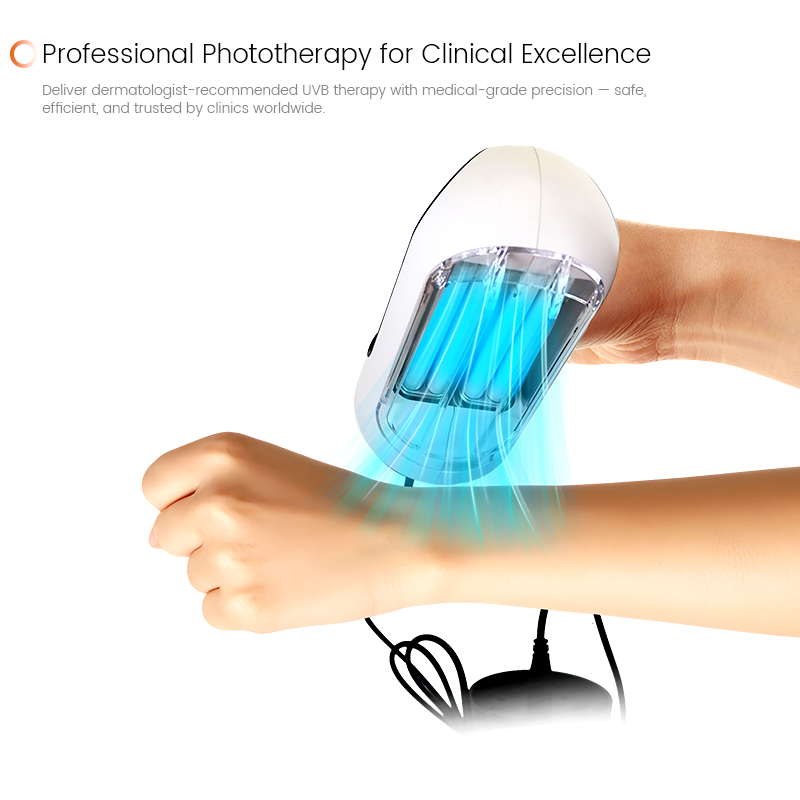
In the world of dermatology, two chronic skin disorders—vitiligo and psoriasis—have long posed treatment challenges. Both affect millions of people globally, often requiring ongoing management and care. Today, innovative technologies like the Diosole desktop UVB phototherapy system are transforming how these conditions can be treated, offering a convenient, efficient, and medically guided option for clinics and home users alike.
Understanding the therapeutic need
Psoriasis results from an overactive immune system that accelerates skin cell turnover, leading to red, scaly patches. Vitiligo, by contrast, occurs when pigment-producing cells stop functioning, leaving light patches of skin.
Phototherapy, particularly narrow-band UVB, has become a cornerstone in managing both conditions. For psoriasis, it helps slow abnormal cell growth and reduce inflammation. For vitiligo, it encourages repigmentation by stimulating melanocytes and restoring pigment in depigmented areas.
However, traditional phototherapy has often been limited by accessibility—patients must visit hospitals or clinics several times a week, often for months. This can be both inconvenient and costly. The introduction of compact phototherapy devices has started to change this reality.
What makes the Diosole desktop system different
The Diosole UVB phototherapy device combines several practical advantages:
High-intensity UVB lamp for stable and efficient radiation output
Compact and lightweight design that fits easily on a clinic desk or treatment cart
Simple interface for ease of operation
Reflective internal board to enhance radiation efficiency and coverage
Together, these features provide both doctors and patients with a reliable, space-saving treatment option without compromising clinical effectiveness.
Clinic and home versatility
The system’s design makes it suitable for multiple settings:
In dermatology clinics, it enables focused treatment of localized areas such as hands, arms, or facial regions. Clinics can treat more patients with flexible scheduling and minimal setup space.
For supervised home use, patients can follow prescribed protocols under remote or periodic physician supervision. This flexibility reduces the need for frequent hospital visits and increases treatment adherence.
For hybrid models, patients can begin treatment in the clinic and continue maintenance therapy at home, improving both comfort and long-term consistency.
Efficacy backed by dermatologic experience
Clinical practice has consistently shown that UVB phototherapy can deliver significant improvement in psoriasis and vitiligo symptoms when administered regularly and correctly. The Diosole desktop unit’s high-intensity lamp ensures shorter, effective sessions, while its stable light source guarantees consistent results over time.
By integrating this technology into home or clinic routines, patients can achieve better treatment continuity—an essential factor in successful phototherapy outcomes.
Safety and treatment protocols
Despite its convenience, UVB light must always be used with caution. Users should wear protective eyewear, avoid excessive exposure, and follow the dosing schedule prescribed by their doctor.
The Diosole system is designed for use “under the guidance of a doctor,” ensuring that treatment remains safe and medically supervised. Patients are advised to document each session’s duration and intensity, monitor skin responses, and immediately report any redness or irritation to their healthcare provider.
Improving patient accessibility and satisfaction
One of the greatest benefits of compact phototherapy devices is improved access to care. Patients who live far from specialized clinics, or those unable to attend frequent appointments, can now receive comparable treatment quality in a more flexible setting.
For dermatologists, it allows expanded service offerings without large-scale investment. For patients, it means convenience, privacy, and the psychological comfort of managing their condition in a familiar environment.